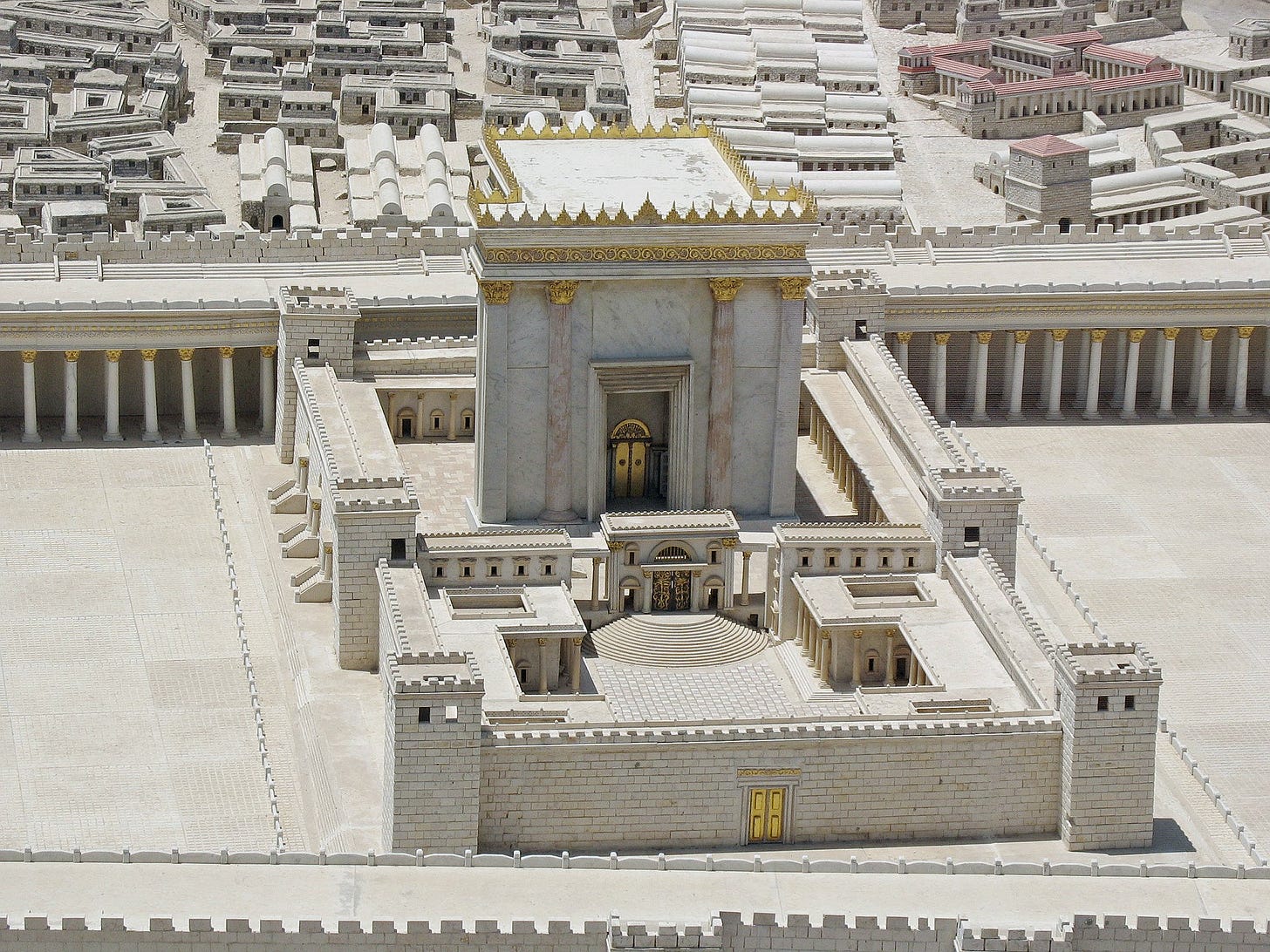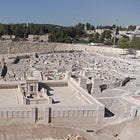The destruction of the Jerusalem Temple in the year 70 CE was a turning point in world history. Deeply traumatic to those who experienced it, the destruction nevertheless resulted in the creation of modern Judaism, facilitated the spread of Christianity and eventually led to the emergence of Islam.
The Jews of ancient Israel prayed fervently for the Temple to be rebuilt. Yet they could do nothing about it. The land was occupied by Rome, Jerusalem had been rebuilt as a Roman city which Jews were forbidden to enter, and the former site of the Temple had been converted into a pagan shrine dedicated to Jupiter.
Around the year 313 CE, the Roman Emperor Constantine declared that he had become a Christian. He decreed that Christianity would now be the official religion of the Roman Empire. But upon his death, his successor Julian abolished his decree and set about restoring the old pagan Roman religion.
To succeed in his task, he needed to block the spread of Christianity and diminish its appeal to his subjects. He knew better than to ban the Christian religion, Christians had long been persecuted in Rome and it had simply strengthened their resolve and won them new followers. So he tried a more subtle approach. He declared freedom of religion across the Empire, rebuilt the old pagan shrines and restored their priests. Crucially, he abolished the laws and taxes that had been imposed on the Jews and indicated that Judaism held a favoured status within the empire. He reasoned that, since Judaism was the ancestor of Christianity, he could win Christians away from their faith by emphasising the virtues and antiquity of the Jewish religion. He saw Judaism as an ally: Christianity had disrupted it, just as it had disrupted his own pagan religion. The old ways, he believed, were best, paganism for the pagans, Judaism for the monotheists.
Julian knew that, according to the gospels, Jesus had prophesied the destruction of the Temple. He decided that a good way to counter the teachings of Christianity would be to demonstrate that the prophecy was false, by rebuilding the Temple. He may also have had a military purpose in mind — he was about to go to war with the Persian empire, where many Jews lived. Many centuries earlier, the Persian emperor Cyrus had given permission to the Jewish exiles in Babylon to return to Jerusalem to rebuild the Temple that the Babylonians had destroyed. Ever since, Jews had held Cyrus in high regard. By announcing to the Jews of Persia that he was about to rebuild the Temple, Julian was effectively equating himself with Cyrus, winning them over to his side in the war he was about to fight.
Work on building the new Temple began in the spring, in the year 363. According to one account, written about 100 years later:
When they had removed the ruins of the former building, they dug up the ground and cleared away its foundation. It is said that on the following day, when they were about to lay the first foundation, a great earthquake occurred. Through the violent agitation of the earth, stones were thrown up from the depths, by which those of the Jews who were engaged in the work were wounded, as were those who were merely looking on. . . The workmen who survived again returned to the task, partly because such was the edict of the emperor, and partly because they were themselves interested in the undertaking.. . . They had scarcely returned to the undertaking, when fire burst suddenly from the foundations of the temple and consumed several of the workmen.
This is just one of many accounts written about what happened. None of them were eyewitness accounts and therefore none can be regarded as fully accurate. But they all agree on one fundamental point. No sooner had the work started than a terrible calamity took place. Some reports say it was an earthquake, some say that a fire burst out from the bowels of the earth. The account above suggests both things happened. Earthquakes were not uncommon in the region in the time and the consensus among academics today is that it was an earthquake, rather than a mysterious fire, that terminated the work. One way or another, the project was abandoned as soon as it had begun.
Julian died in the same year as the failed Temple rebuilding and his successor, Jovian, restored the Christian faith as the official religion of Rome (with Julian becoming known as the Apostate, a title which still attaches to his name today). The reason why there are so many conflicting and unverifiable reports about what happened, is that Christian preachers saw the failure of the project as proof of the truth of Christianity. The Temple had been destroyed, just as Jesus had prophesied and it would never be rebuilt, because Judaism had been superseded by Christianity. The earthquake, or fire, proved exactly that point. Preachers told and retold the story, embellishing it each time until it became impossible to tell what had really happened.
There was some excitement in the 1970s, when a letter was discovered in a library. It appeared to be based on a report by Cyril, the bishop of Jerusalem, who lived at the same time as the rebuilding was supposed to have taken place. According to Sebastian Brock, the scholar who found the letter, the document is not an eyewitness account but it does contain some valuable information. It says that the work began on the 19th Iyyar, the day after the rather obscure Jewish festival of Lag b’Omer, a festival marked by the lighting of bonfires. The origins of the festival are shrouded in mystery and Brock wondered whether the true source of Lag b’Omer was actually to commemorate this attempt to rebuild the Temple and the fires that mysteriously broke out.
One of the most puzzling things about the story of the rebuilding of the Temple, is that there is no mention of it in Jewish sources. Given the importance of such an occurrence and the centuries-long yearning for the Temple to be rebuilt, we might expect an episode of such magnitude to be at least mentioned in the Jewish literature. Particularly as it took place at a time of great literary activity in the Jewish world, during the same period as the discussions were held that would be recorded in the Talmud.
But there is no direct reference to Julian’s rebuilding anywhere in the ancient Jewish literature. Researchers have pointed to a couple of sources in the Talmud that might be connected to it though they are by no means conclusive; it almost feels as if they are clutching at straws. The most promising is in the Jerusalem Talmud, where Rabbi Aha insists that the Temple will not be built before the coming of the Messiah. In other words, he might be distancing himself from any other attempt at rebuilding. Still, it is not at all certain that he has Julian’s in mind. Another is a story in which the Jews, rather than the Romans, who tried to rebuild the Temple, but were prevented by Rome. Neither of these accounts are particularly instructive.
As Sebastian Brock points out, there are so many legends and tales about Julian’s wish to rebuild the Temple that there must be a core of historical truth to the stories. But whether the work was ever actually started, why it did not continue, what the Jewish population of Roman Palestine thought about it and whether they played any part in the project, are all mysteries that may only be resolved in the future. And only if someone manages to find an unbiased eyewitness account.




